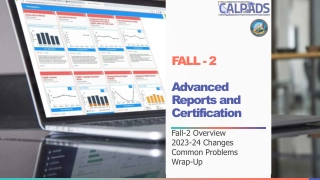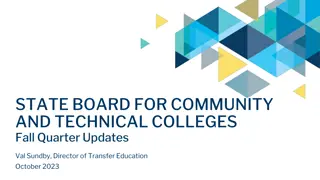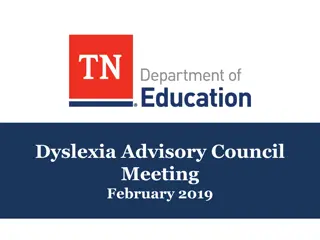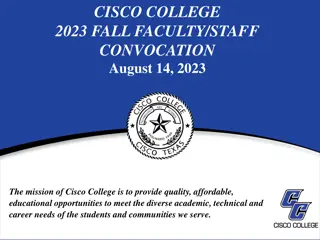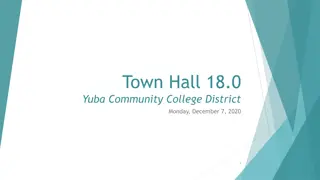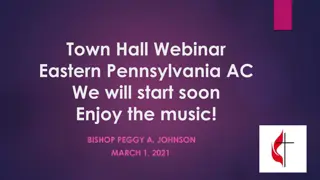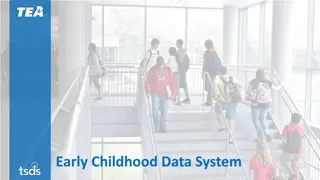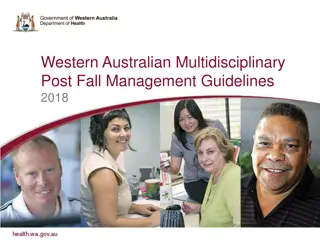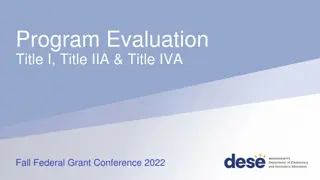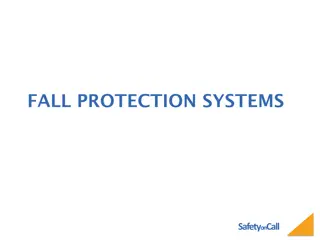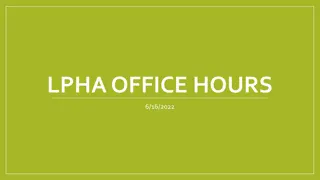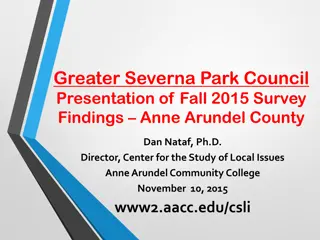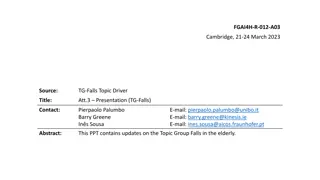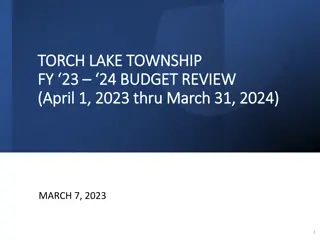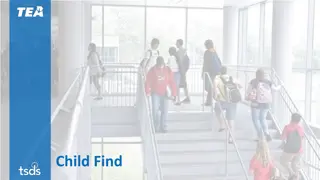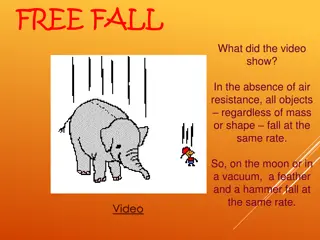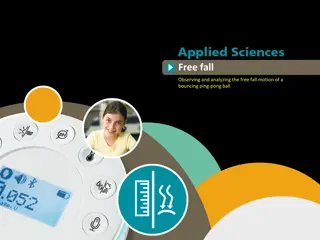TORCH Conference Fall 2022 Updates and Insights
Latest updates and insights from the TORCH Conference Fall 2022, covering topics like Directed Payment Programs, Rural Healthcare Relief Grant, DSH/UC Price Transparency, and more. Get ready for the future of healthcare with key information on DSRIP reporting, Uncompensated Care, and the Comprehensive Hospital Increase Reimbursement Program (CHIRP).
Download Presentation

Please find below an Image/Link to download the presentation.
The content on the website is provided AS IS for your information and personal use only. It may not be sold, licensed, or shared on other websites without obtaining consent from the author.If you encounter any issues during the download, it is possible that the publisher has removed the file from their server.
You are allowed to download the files provided on this website for personal or commercial use, subject to the condition that they are used lawfully. All files are the property of their respective owners.
The content on the website is provided AS IS for your information and personal use only. It may not be sold, licensed, or shared on other websites without obtaining consent from the author.
E N D
Presentation Transcript
TORCH Conference Fall 2022 Mark Havins Shonna Cannaday Brent Fuller ..@dhcg.com (806) 791-1591
Topics Updates and Current Events Directed Payment Programs PRF Rural Healthcare Relief Grant DSH/UC Price Transparency Method 1 and II Billing Low Volume Payments Medicare DSH / 340B Preparing for the Future CHART Rural Emergency Hospital Program CoP Proposed Rules Future of Healthcare DSH/UC Pricing Transparency Scan to get your copy NOW
DSRIP DY11 October Reporting Last Round of DSRIP Reporting Only for providers with CY2021 Cat C data left to report Otherwise, providers do not need to report; not even a Provider Summary is due. Final opportunity to report; no NMI period
DSRIP DY11 Schedule- October Reporting October 1, 2022 October 25, 2022 October 31, 11:59 PM - DSRIP online reporting window opens - Deadline to submit questions or report template issues to HHSC - Deadline for reporting to HHSC November 16, 2022 December 1, 2022 - HHSC will post estimated IGT for providers - IGT change forms due to HHSC December 9, 2022 - HHSC will complete review & approval of reporting *No NMI Period* December 14, 2022 January 4, 2023 - Estimated date for HHSC to send out IGT notifications - IGT settlement date January 31, 2023 - Payment to all providers
Uncompensated Care (UC) Expected to increase from 3.9 billion to 4.9 billion in DY12. Should help the urban hospitals more than rural hospitals DY10 rural hospitals received 79% of total eligible UC cost vs urban hospitals received 51% of total eligible UC cost.
Uncompensated Care (UC) Key Dates DY11 Final IGT - September 30, 2022 (Settlement Date) DY12 Advanced IGT - February 2, 2023 (Settlement Date)
Comprehensive Hospital Increase Reimbursement Program (CHIRP) CMS approved CHIRP for SFY 2023 (Y2) on August 1, 2022. Open to six classes of hospitals: children s, rural, state-owned that are not IMDs, urban, non-state owned IMDs, and state owned IMDs For Medicaid Managed Care only (adults & children in STAR, STAR+PLUS) No Uninsured, No Medicare Dual Eligible, No Medicaid FFS Comprised of two claims-based components: Uniform Hospital Rate Increase Program (UHRIP) - % increase on MCO rate paid on all inpatient and outpatient services claims Rate determined by hospital class and SDA Region calculation - AVERAGE Offsets for NAIP Average Commercial Incentive Award (ACIA) Not average Specific Based on a % of estimated Average Commercial Rate (ACR) IGT is accumulated and based on each SDA
CHIRP Reporting Component 1 Reporting 1. Health Information Exchange (HIE) Participation 2. Learning Collaborative Participation 3. Medication Reconciliation: # of Unintentional Med Discrepancies per Patient Component 2 Reporting For rural, this is comprised of two components: 1. Tobacco Use: Screening & Cessation Intervention Percentage of patients aged 18 years and older who were screened for tobacco use one or more times within 12 months AND who received tobacco cessation intervention if identified as a tobacco user 2. Influenza Immunization Percentage of patients aged 6 months and older seen for a visit between October 1 and March 31 who received an influenza immunization OR who reported previous receipt of an influenza immunization Reporting periods for both components: October 2022 measurement period of 1/1/22 to 6/30/22 April 2023 measurement period of 1/1/22 to 12/31/22 Payer stratification: Medicaid Managed Care, Other Medicaid, Uninsured, and All Payer Must have at least one encounter for each component during the measurement period
CHIRP Key Dates June 2021 March 2022 May 2022 June 2022 August 2022 - PY1 1st IGT was submitted - CMS Approves CHIRP PY1 - PY1 2nd IGT was submitted - PY2 1st IGT was submitted - CMS Approves CHIRP PY2
CHIRP Key Dates October 2022 - PY2, Round 1 Reporting Due to HHSC Measurement period January 1, 2022- June 30, 2022 November 2022 - IGT Due (PY2 2nd IGT) April 2023 - PY3 Application Due estimate based on PY2 April 2023 - PY2, Round 2 Reporting Due to HHSC Measurement period January 1, 2022- December 31, 2023 June 2023 - IGT Due (PY3 1st IGT) November 2023 - IGT Due (PY3 2nd IGT)
Rural Access to Primary and Preventive Services (RAPPS) For RHC s hospital-based or free standing Incentivizes primary & preventive services for individuals enrolled in Medicaid managed care (STAR, STAR+PLUS, STAR Kids) in rural areas Focuses on management of chronic conditions Minimum volume of 30 Medicaid MCO unique encounters in the prior fiscal year Payment methodology: Component 1 75% of program value Uniform dollar increase paid in monthly payments (amt of increase varies by RHC class) Component 2 25% of program value % rate increase on preventive care & services to manage chronic conditions
RAPPS Reporting Component 1 Reporting 1. Care coordination Care team composition & # of encounters performed by personnel in a care coordination role not requiring clinical licensure 2. Telemedicine/telehealth capabilities Usage of telehealth to provide virtual medical appts with a primary care or specialty care provider 3. Electronic health record (E.H.R.) use Usage of E.H.R. Component 2 Reporting 1. A1c Poor Control (>9.0%) Percentage of patients aged 18-75 with diabetes who had hemoglobin A1c >9.0% during the measurement period 2. Influenza Immunization Percentage of patients aged 6 months and older seen for a visit between October 1 and March 31 who received an influenza immunization OR who reported previous receipt of an influenza immunization Reporting periods for both components: October 2022 measurement period of 1/1/22 to 6/30/22 April 2023 measurement period of 1/1/22 to 12/31/22 Payer stratification: Medicaid Managed Care, Other Medicaid, Uninsured, and All Payer
RAPPS Key Dates October 2022 - PY2, Round 1 Reporting Due to HHSC Measurement period January 1, 2022- June 30, 2022 November 2022 - IGT Due (PY2 2nd IGT) April 2023 - PY3 Application Due estimate based on PY2 April 2023 - PY2, Round 2 Reporting Due to HHSC Measurement period January 1, 2022- December 31, 2023 June 2023 - IGT Due (PY3 1st IGT) November 2023 - IGT Due (PY3 2nd IGT)
Hospital Augmented Reimbursement Program (HARP) For non-state-owned hospitals Payments for inpatient and outpatient services for Medicaid FFS patients Requires submission & CMS approval of a state plan amendment (SPA) HHSC submitted separate SPAs for public providers & private providers on September 14, 2021. SPA for public providers was approved on August 31, 2022. SPA for private providers- not yet approved Semiannual payments based on sum of inpatient and outpatient FFS Medicare payment gap Y1 (October 1, 2021- September 30, 2022) will have only one combined payment due to timing of approval. Payments are anticipated to be made by the end of September 2022.
HARP Modeling- Updated 9.2.22 Must meet criteria for either the IP or OP UPL Test. Mcare Payments Mcare Charges 2019 Cost Report = Payment to Charge (PTC) 3/1/19 - 2/28/20 Mcaid Charges Mcaid Payments Mcaid Supplemental Payments (GME/Training) = Inflated Mcaid Pmts Mcaid Pmts + Supplement Pmt Mcaid Charges x PTC = Calculated Mcaid UPL Amount = Inflated UPL Amount Calc Mcaid UPL Amt x UPL Inflation Factor Inflated UPL Amount - Inflated Mcaid Pmts = Adjusted UPL Gap
HARP Modeling- Updated 9.2.22 Must meet criteria for either the IP or OP UPL Test. Mcare Payments 250,000 2019 Cost Report = Payment to Charge (PTC) = 50% Mcare Charges 500,000 3/1/19 - 2/28/20 Mcaid Charges 60,000 Mcaid Payments 20,000 Mcaid Supplemental Payments (GME/Training) 0 Mcaid Pmts + Supplement Pmt = Inflated Mcaid Pmts 20,000 + 0 = 20,000 =Calculated Mcaid UPL Amount Mcaid Charges x PTC 60,000 * 50% = 30,000 = Inflated UPL Amount 30,000 * 1.0182 = 30,546 Calc Mcaid UPL Amt x UPL Inflation Factor
HARP Key Dates September 21, 2022 - IGT Due September 30, 2022 - Estimated date of Y1 Payment For October 1, 2021- September 30, 2022 Future key dates have not been released.
QIPP Update Year 5 Concerns Component 1 Reconciliation 6 months after QIPP Year 5 Payments will be based on actual Medicaid days for 2022 vs the 2018 Medicaid CR days. This will reduce Component 1 payments to NFs that had less days due to Covid Component 1 & 4 Payments Being reduced retroactively to Sep. 1, 2021 due to private NFs moving to NSGO NFs for QIPP Year 6. NFs that were not eligible for QIPP Year 6 due to Covid reductions elected to move to NSGOs. QIPP Year 5 Conditions fo Participation Remediation Launching October 2022 Listing of NFs who did not meet COP for the 2022 program should be released by October 5, 2022. Failure to remediate will result in removal from program and recoupment of funds.
QIPP Update Year 6 Funding level remains at 1.1 Million 951 Total providers 701 NSGOs 250 Private NFs Component 3 MDS Measurement Based solely on Medicaid residents, prior years was based on total residents. Impact on rural or smaller NFs by not having sufficient Medicaid residents. Could result in more Min Data and increase the missed metrics.
Directed Payment Program for Behavioral Health Services (DPP BHS) For Community Mental Health Centers & Local Behavioral Health Authorities Incentivizes improving access to behavioral health services, care coordination, successful care transitions, and continuation of care using the CCHBC model of care for individuals enrolled in Medicaid managed care (STAR, STAR+PLUS, STAR Kids). Must have at least one Medicaid service to a Medicaid managed client. Payment methodology: Component 1 65% of program value Uniform dollar increase issued in monthly payments Component 2 35% of program value % rate increase on certain services; claims-based Providers with CCBHC certification receive a higher rate enhancement.
DPP BHS Key Dates October 2022 - Year 2, Round 1 Reporting Due to HHSC Measurement period January 1, 2022- June 30, 2022 November 2022 - IGT Due April 2023 - Year 2, Round 2 Reporting Due to HHSC Measurement period January 1, 2022- December 31, 2023 June 2023 - IGT Due
Texas Incentives for Physician and Professional Services (TIPPS) Eligible groups include health related institutions (HRIs), IME physician groups affiliated with hospital groups, and other physician groups HRIs and IMEs must have a minimum volume of at least 30 Medicaid managed care patients in at least 50% of quality metrics Other physician groups must have a minimum volume of a least 250 Medicaid managed care patients For individuals enrolled in Medicaid managed care (STAR, STAR+PLUS, STAR Kids) Payment methodology: Component 1 (only HRIs and IMEs) 65% of program value Uniform dollar increase paid in monthly payments Component 2 (only HRIs and IMEs) 25% of program value Uniform dollar increase paid in semiannual payments Component 3 (all physician groups) 10% of program value % rate increase on certain outpatient services (maternal health, chronic care, behavioral health, & social determinants of health); claims-based
TIPPS Reporting Reporting periods for both components: October 2022 measurement period of 1/1/22 to 6/30/22 April 2023 measurement period of 1/1/22 to 12/31/22 Payer stratification: Medicaid Managed Care, Other Medicaid, Uninsured, and All Payer Component 1 Reporting 1. Care team includes personnel in a care coordination role not requiring clinical licensure 2. Health Information Exchange (HIE) Participation 3. Patient-Centered Medical Home (PCMH) accreditation or recognition status 4. Same day walk-in or after-hours outpatient appointments 5. Pre-visit planning and/or standing order protocols 6. Patient education focused on disease self-management 7. Identification of pregnant women at-risk for hypertension, preeclampsia, or eclampsia; treatment based on best practices; and follow-up with postpartum women diagnosed with these conditions 8. Telehealth to provide virtual medial appointment and/or consultations for specialty services, including both physical and behavioral health services
TIPPS Reporting- Component 2 Component 2 Reporting 1. Influenza Immunization 2. Tobacco Use: Screening & Cessation Intervention 3. Cervical Cancer Screening 4. Childhood Immunization Status 5. Immunization for Adolescents 6. Screening for Depression & Follow-Up Plan 7. Hemoglobin A1c Testing 8. Tobacco Use and Help with Quitting Among Adolescents 9. Chlamydia Screening 10. Controlling High Blood Pressure
TIPPS Reporting- Component 3 Component 3 Reporting 1. Hemoglobin A1c Poor Control (>9.o%) % of patients aged 18-75 with diabetes who had hemoglobin A1c >9.0% during the measurement period 2. Food Insecurity Screening % of patients screened for food insecurity using the Hunger Vital Sign (HVS) questions with the screening results documented during the current encounter or during the previous 12 months 3. Maternity Care: Post-Partum Follow-Up and Care Coordination % of patients who gave birth during a 12-month period who were seen for postpartum care before or after 8 weeks of giving birth and received a postpartum visit entailing specified criteria 4. Behavioral Health Risk Assessment for Pregnant Women % of women who gave birth during a 12-month period who were seen at least once for prenatal care and who received a behavioral health screening entailing specified criteria 5. Depression Response at Twelve Months % of patients aged 12-17 and 18 and older with Major Depression or Dysthymia who demonstrated a response to treatment 12 months (+/- 60 days) after an index event 6. Weight Assessment for Children/Adolescents % of patients aged 3-17 with a PCP or OB/GYN visit who had height, weight, and BMI percentile documented
TIPPS Key Dates October 2022 - Year 2, Round 1 Reporting Due to HHSC Measurement period January 1, 2022- June 30, 2022 November 2022 - IGT Due April 2023 - Year 2, Round 2 Reporting Due to HHSC Measurement period January 1, 2022- December 31, 2023 June 2023 - IGT Due
DPP Contact Information Sign-Up for Notifications https://service.govdelivery.com/accounts/TXHHSC/subscriber/new Measure Specification & Performance Requirement Questions DPPQuality@hhs.texas.gov Financial, Eligibility, and IGT Questions CHIRP & RAPPS TIPPS DPP BHS HARP PFD_Hospitals@hhsc.state.tx.us PFD_TIPPS@hhs.texas.gov PFD_DPPBHS@hhs.texas.gov Not yet released
PRF Reporting Period 3 NOW OPEN Providers who received more than $10k in general distribution or infection control payments between January 2021 June 2021 DUE SEPTEMBER 30th at 11:59ET
Allowable Expenses and Strategy PREVENT PREPARE FOR RESPOND
Recruiting & Retaining Personnel What s allowable? Salaries for new or temporary Employee referrals Employment agencies Hiring bonuses Ie. Pandemic Premium Pay Incentive Pay Retention bonuses Childcare assistance Overtime pay Temporary housing Transportation Mental health & stress management resources Retention Examples Recruitment Examples
Rural Healthcare Relief Grant What you need to know Tier 2 (Competitive Award) Applications were due in August 4th for Hospitals 12thfor NF s and HHA s Award notifications will take place in October 2022 Funds will be distributed in November 2022 You will have 9 months to spend the funds Any cost incurred prior to funds being distributed do NOT count Funding Utilization report will be due August 2023
Rural Healthcare Relief Grant What you need to know Tier 1 (Direct Award) was issued in April $250k per hospital You have 6 months to spend these funds and a survey from HHSC will be issued in October for you to describe how these funds were utilized by the below categories: Infrastructure Personnel Lost Revenue
DSH/UC 2023 DSH/UC Application is available now and must be requested by September 30th Current Developments Update We expect the application to be sent out by October 24th making these due November 24th
Price Transparency Where are we now? Many are still not compliant - Do your due diligence and verify that you are. CMS has proposed an increase in penalty of up to $2 Million a year. HHSC imposing their own fees based on SB 1137 $10 per day, if the facility s gross revenue is < $10 million $100 per day, if the facility s gross revenue is $10 million to $100 million $1000 per day, if the facility s gross revenue is >$100 million Published Data/Machine readable files are being consumed. Beware of chargemaster reviews that don t consider the implications to your Medicare reimbursement!
Price Transparency What is required? Machine Readable File Shoppable Tool
Examples of Non-Compliance Pricing Estimators do not constitute as a machine-readable file Historic data is not compliant- based on claim data All contracted payors must be listed Incomplete excel files could be problematic Most do not include EMPLOYED physician s & mid-level s charges Must be in a prominent location & labeled clearly on your home page HHSC and CMS both are really looking at this when citing non-compliance
CAH Method I vs Method II Billing SSA ( 1834(g)) Professional Fee Services Rural areas Allows for Incentive in Payment (115% of fee schedule amount, less applicable ded/coins) Method I (Standard Method) - CAH receives cost-based facility payment, plus fee schedule for professional fees for O/P services Method II (Optional Method) CAH receives cost-based facility payment, plus 115% of fee schedule for professional services for O/P services
CAH Method I vs Method II Billing SSA ( 1833(m)) Method II Qualifications (Outpatient services) Method II (Optional Method) applies to professional fee schedule services billed through the hospital One time election for Method II billing - not annual Must apply to Contractor 60 days prior to the beginning of the CR FYE Each Practitioner must agree in writing to not bill under Pt B carrier Medicare Enrollment App- CMS-855R
CAH Method I vs Method II Billing Method II ( Optional Billing Method) Can include any Outpatient Professional fee billing Election for method II is not all-inclusive each practitioner CRNA (rules for CRNA Exempt hospitals) OR Professional Fee Services ER professional fees Radiology reading fees Additional add-on payment for O/P services in HPSA (10%) Ensure proper revenue codes (96x 98x) w approp HCPCS (00100 01999) AND inclusion of proper modifiers. i.e. GF modifier for non-physician services (Mid-level practitioner), except for CRNA i.e. QB for services in Rural HPSA, QU for urban HPSA (services performed)
CAH Method I vs Method II Billing CRNA services and Method II billing (Pub 100-04) Each Practitioner rule method II not all-inclusive Evaluate CRNA exemption vs. Method II billing - reimb. impact If CAH receives CRNA exemption, they can not also bill under method II for CRNA professional fee services. If Method II billing applies, then hospital will lose CRNA exemption for I/P and O/P CRNA services. O/P AND I/P CRNA services would need to be billed under Part B You can still choose method II for all other O/P services Consider: I/P vs O/P utilization in surgeries or high professional fee charges Can
Low Volume Payment Adjustment Low Volume Payment Adjustment (LVPA) [42 CFR 412.101] Add-on payment to the DRG for those qualifying hospitals with a low volume of discharges Initial rule was enacted 10/01/2005 Congress originally left interpretation of rule to CMS discretion: For FFYs 2005 through 2010 and beginning FFY 2023: (old regulations) Less than 200 Total Hospital must be more than 25 miles from a subsection (d) hospital (IPPS Hosp) There are very few hospitals in the entirety of the United States that could qualify for the LVPA under these regulations.
Low Volume Payment Adjustment In FFY 2011 Congress superseded CMS interpretation and made the low volume payment obtainable for more rural hospitals. FFY 2011 2018 Congressional Rule in Federal Register Less than 1600 Medicare discharges More than 15 miles from nearest like-kind hospital Paid on a reverse sliding scale for discharges between 200 and 1600 For FFYs 2019 through 2022: (newly revised qualifications) Less than 3,800 total discharges More than 15 miles from like-kind hospital Still paid on a reverse sliding scale for discharges between 500 and 3,800.
Low Volume Payment Adjustment Last Congressional Extender was 5 years extension for LVPA FFY 2018 FFY 2022 Announced April 26, 2018 More than 6 months into the period that the extender applied to. Retroactive payments back to October 2018 As of now, Rule for FFY 2023 will revert back to CMS interpretative guidelines: Less than 200 Total Discharges Hospital must be more than 25 miles from nearest like-kind hospital There are very few hospitals in the entirety of the United States that could qualify for the LVPA under these regulations.
Low Volume Payment Adjustment Question: Any chance this can be fixed? As we enter the Mid-Term elections, Congress will likely be focusing on election. We believe once the new Congress is sworn in at the start of 2023, one of the items to be addressed will be the Low Volume Payment Adjustment and other extender payment provisions. Unfortunately, this process will not be completed as soon as we would like; therefore, we don t anticipate any resolution until the beginning of CY 2023. We know that TORCH and others are working to bring this to Congressional attention ASAP.
Medicare DSH and 340B Can Eligibility PPS hospitals (incl rural classifications), CAH, rural referral centers (RRC), Children s hosp, Freestanding Cancer facilities Prospectively Paid Hospitals Not classified as Sole Community (SCH) Medicare Disproportionate Share (DSH) Payment percentage 11.75% or greater from most recent CR Sole Community (SCH) Medicare DSH Payment percentage 8% or greater from most recently filed CR Individual receiving 340B pricing must be a patient of the covered 340B entity.
Medicare DSH and 340B Can 340B Program requirements HRSA rules mandate hospital s notification of ineligibility in 340B program upon filing of CR indicating lack of eligibility. HRSA mandates hospital cease purchasing drugs at 340B pricing on day hospital files the CR FAQ on HRSA website addressing amended / reopened cost reports and lack of retroactive application for 340B eligibility. Major Drug manufacturers are transitioning to discounted payment provisions for hospitals with only one retail pharmacy contract.


